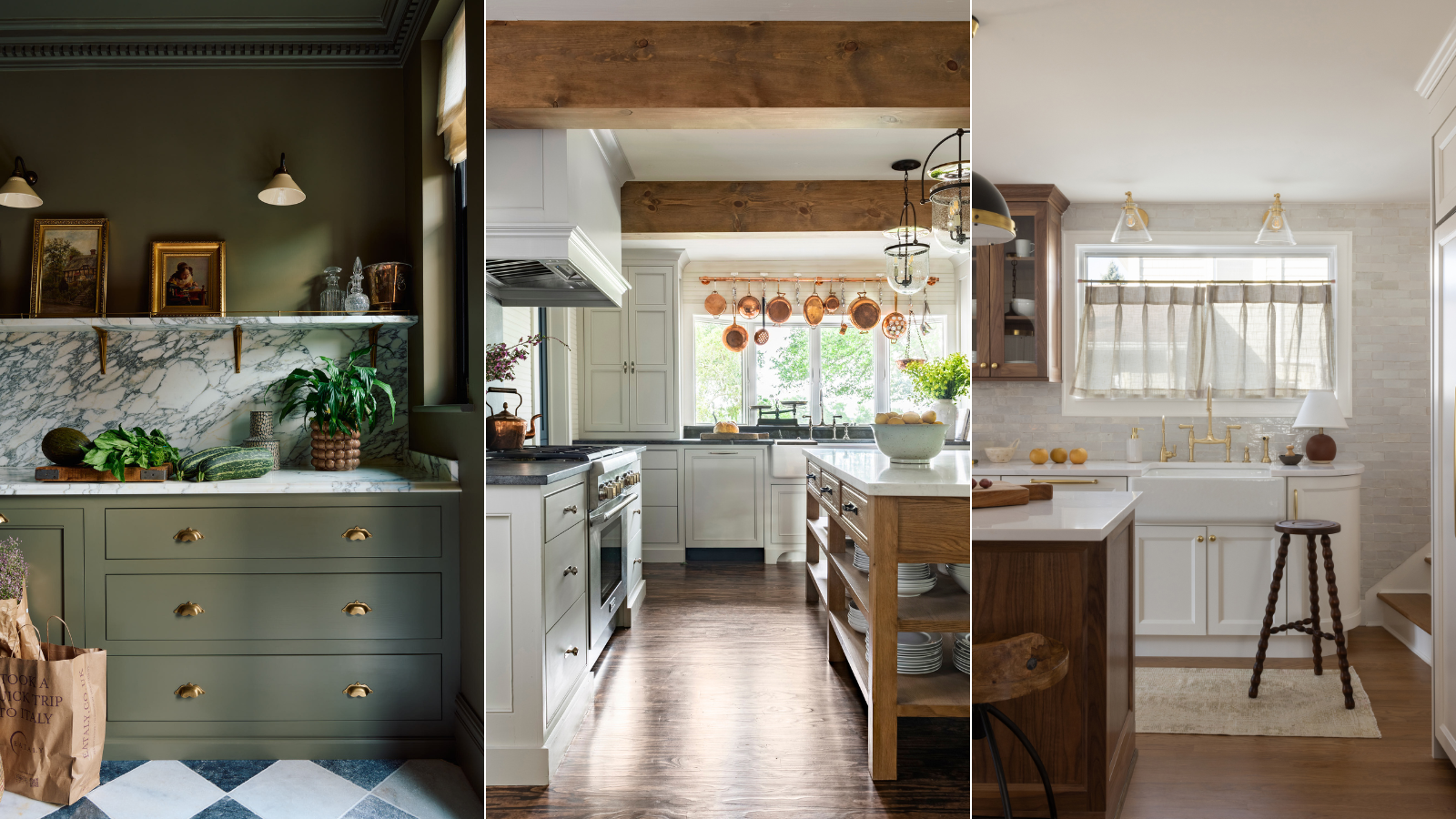
Kitchens, by nature, are very practical spaces. They have to be of course, but adding vintage and antique pieces into a kitchen can be an easy way to bring character and charm into a space that is so often in need of it.
And this needn't mean you have a totally vintage kitchen, there are ways to make antiques and vintage decor work in any style of kitchen. There's such a strong trend right now for transitional spaces and mixing old with you, but it goes beyond being a trend because the aim of this design approach is to transcend trends and create spaces that are totally timeless. There's no room you want to stand the test of time more than your kitchen, so it's no surprise that old-new looks have become so popular.
But how do you add vintage decor and furniture into a kitchen in a way that ensures the space is still practical? We spoke with interior designers on how they blend vintage into a kitchen no matter what the style and what specific pieces work best.
How to bring vintage pieces into a kitchen
'It is definitely worth spending time sourcing vintage pieces to break up a kitchen, they can really make a difference to the finished look and always add personality and character,' says Helen Parker, Creative Director of deVOL.
It's that breaking up of the space that's definitely why it always works to add in some vintage finds. Kitchens are full of straight lines, sleek surfaces, and solid cabinetry it's key to interrupt that with something with character. Plus, this look really leans into that ever-growing kitchen trend of kitchens that don't feel like kitchens, adding in pieces that are associated with the space or soften the room.
1. Don't think 'kitchen'
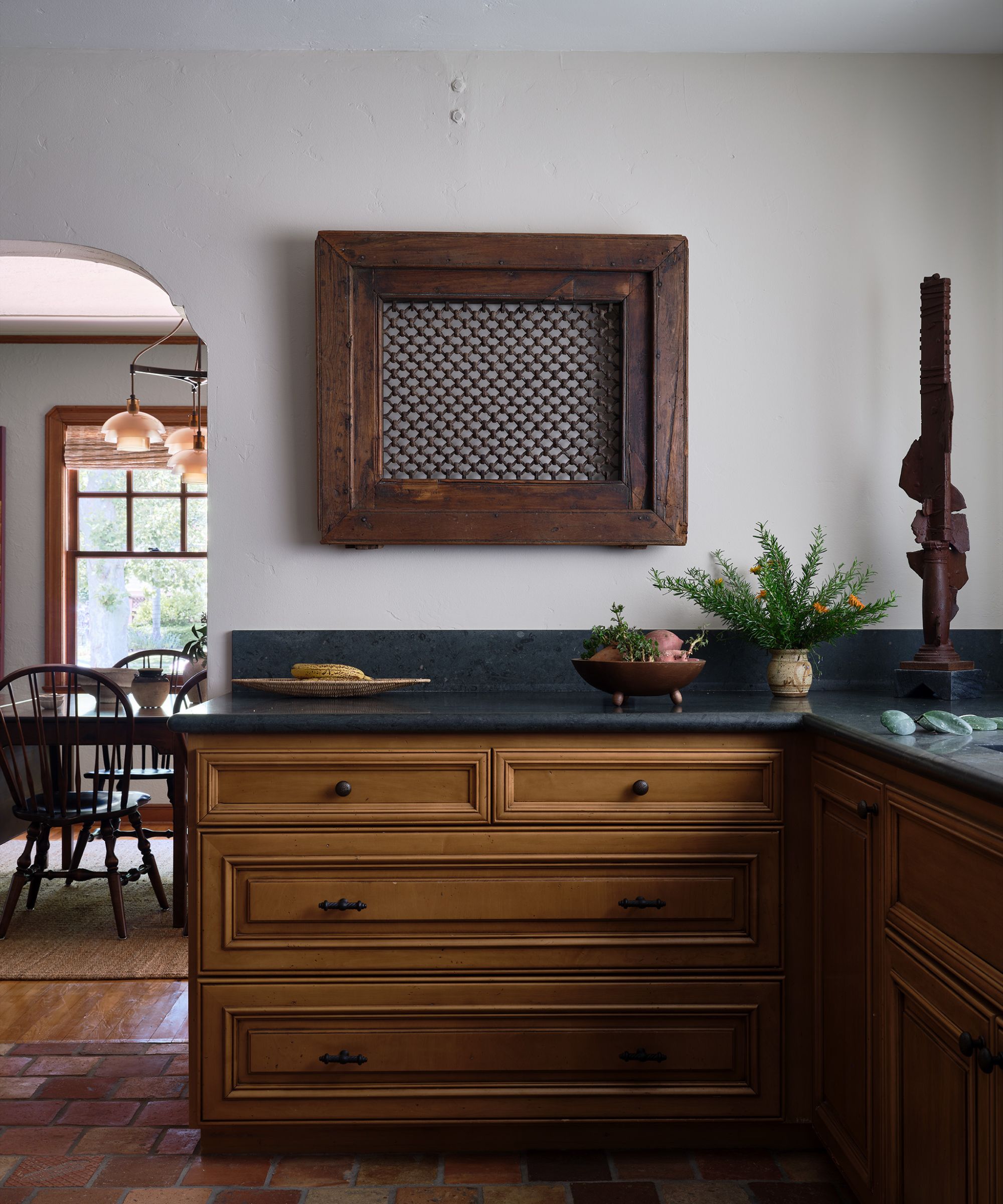
When adding vintage pieces into a kitchen, slightly move away from the fact you are decorating a kitchen. Obviously, you still want your decisions to have some base in practicality and reality, but do consider it more like shopping for a living room.
As Helen says, 'When adding vintage to a kitchen, pick pieces that may be better suited to a living room or your grandma's home! It’s about being brave and unique with colors and not following a tried and tested (but obvious) look. It's about mixing up old with new and always trying to source authentic and well-made pieces.
'There is nothing more appealing than a room with character and soul and this comes from having old and new. It doesn’t have to be eclectic or bohemian (but it can be) it just needs to feel as if the room has evolved and been considered, rather than everything has been chosen at the same time.'
In this modern rustic kitchen, designed by Evgenia Merson Design, shopping for second-hand pieces was key to the room to ensure it had depth and was rich with character. Evgenia's advice is to 'Explore the charm of flea markets, where hidden treasures like unique utensils and pottery await to infuse your kitchen with character. Vintage art pieces turn the walls into a gallery of memories that resonate with the timeless elegance of the past. Vintage area rugs always add warmth and tell a story beneath your feet.'
2. Create displays with practical decor

'Displaying antique copper pots and pans always makes for a beautiful kitchen accent.' suggests the designer of this white kitchen, Marie Flanigan. 'I love to use these storied pieces to introduce an additional finish and a bit of patina to the space.'
'Antique pots and pans are also typically easy to find at consignment and antique shops. Another architectural piece that makes a kitchen feel cozy and special are reclaimed wood beams. I have used beams like this in several of my projects and love the character that they add to a space.'
Design Kathy Kuo agrees the best way to bring vintage into a kitchen is through small pieces that are technically kitchen items but double up as decor. 'When it comes to bringing heirlooms or antiques into a kitchen design, I find that it makes the most sense to stick with decorative objects, rather than practical ones. Think vintage crocks and jars to hold utensils and vases. Vintage dish towels, aprons, and potholders can also be a lot of fun!'
3. Bring in some vintage glazed storage
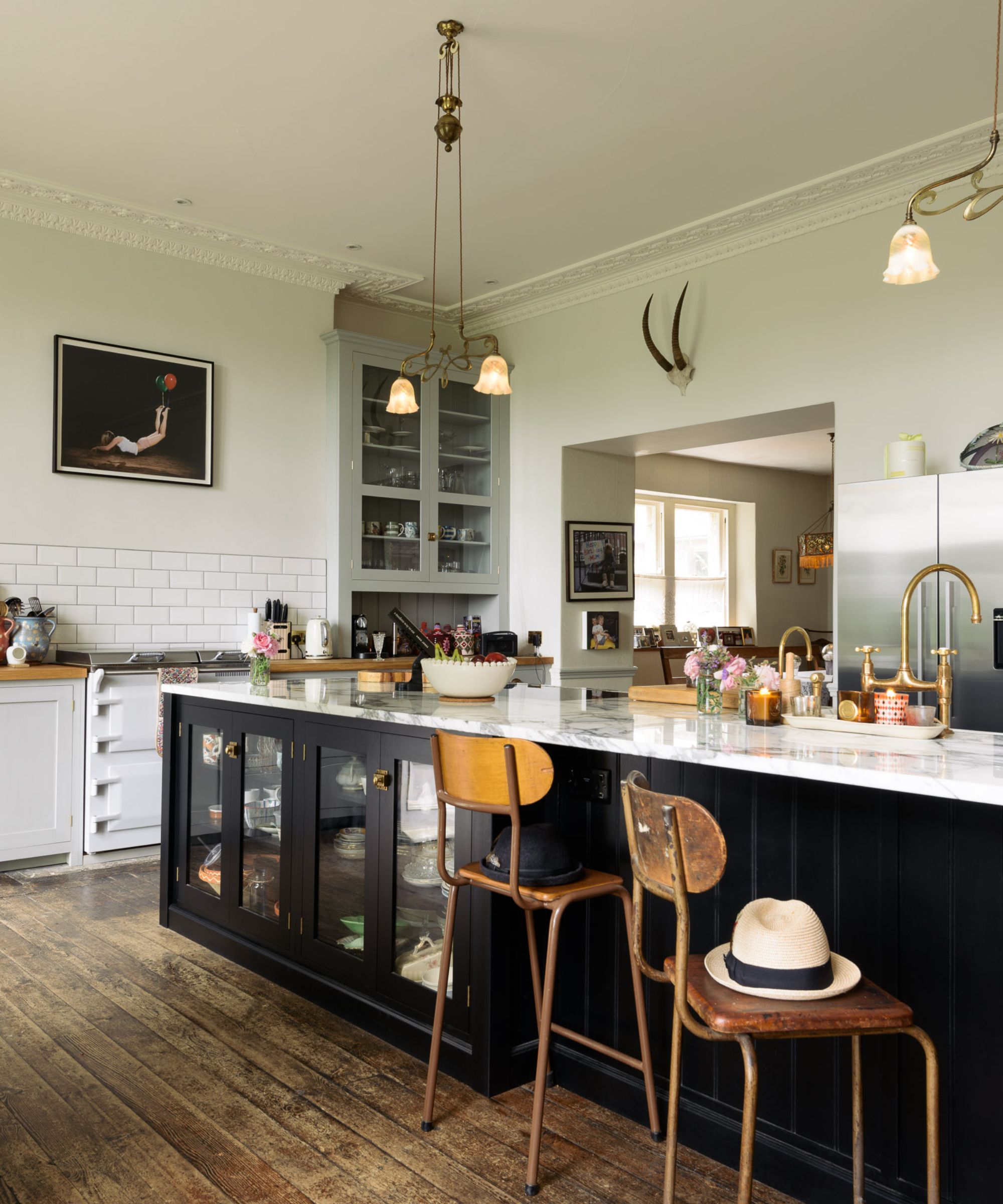
Decor is not the only way to add vintage to a kitchen. Larger pieces of furniture can sit just as happily in the space. An old butcher's block as a kitchen island, a bench for extra seating or as Helen suggests bringing in some vintage kitchen cabinetry to add texture amongst the sleek cabinets.
'Sometimes gadgets and treasures can get a little dusty or greasy if displayed in open areas of the kitchen, this is not such an issue if you use your things every day but if not it is a problem. So glazed cupboards are a good solution, old museum cabinets and vintage glazed pieces, although hard to find are a great way to display and store in style.' suggests Helen Parker.
4. Add in vintage seating
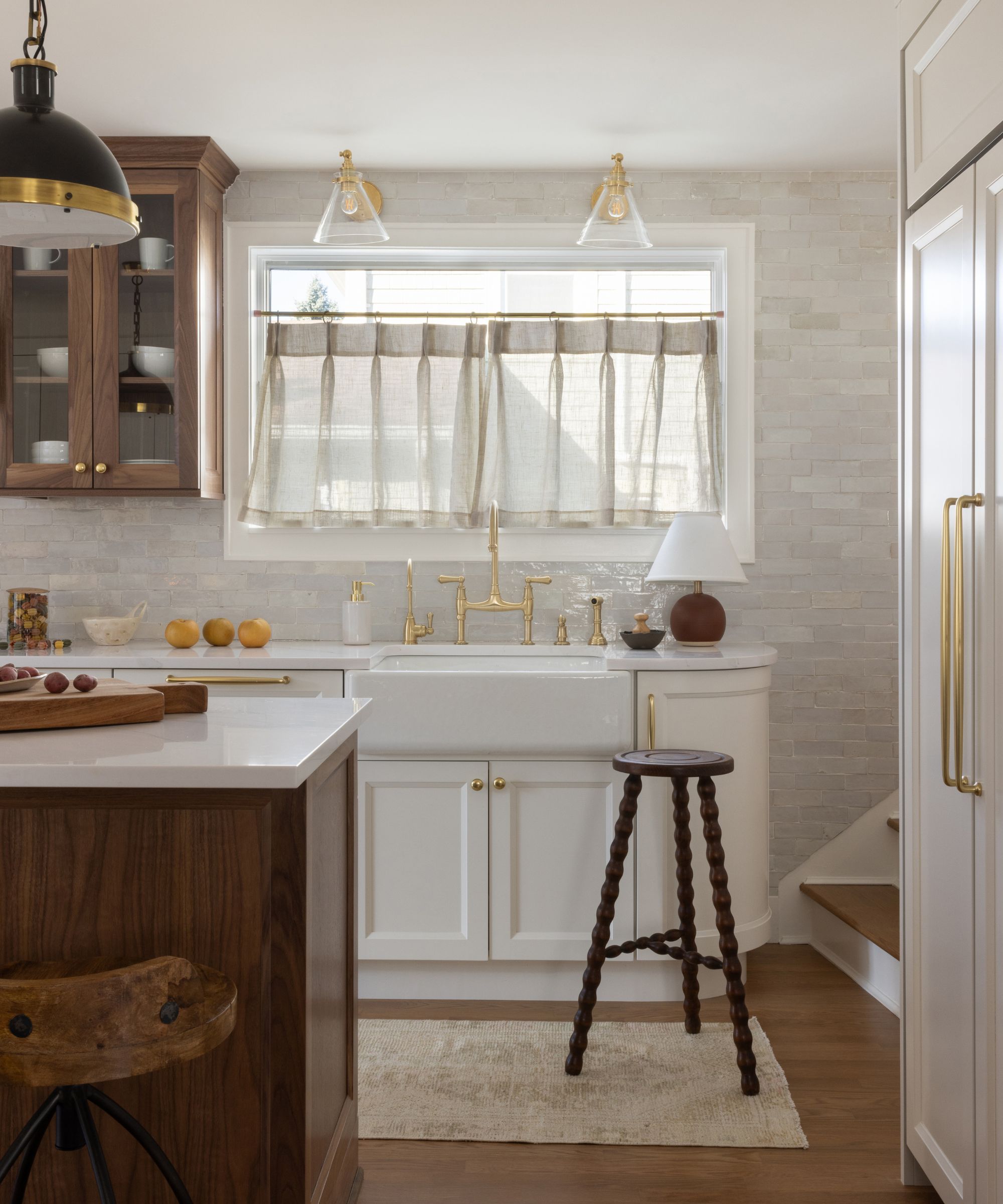
Vintage seating is another simple way to bring older pieces into a practical space. Plus, you can move them around your home as and when you might need to. Vintage stools look lovely positions around an island but you could also embrace the living kitchen trend and bring in an old armchair or loveseat too create an instant coffee nook within the space.
'In our kitchen designs, we have a love for integrating antiques and vintage pieces to instill warmth and timelessness into what is typically a hard and shiny room,' explains designer Danielle Chiprut. 'Our recommendation is to begin by incorporating vintage decor and hardware, introducing a timeless touch to the space. We particularly enjoy layering in antique stools or vintage lighting to evoke an old-world feel, creating a kitchen that exudes character and charm.'
5. Create instant character with vintage lighting
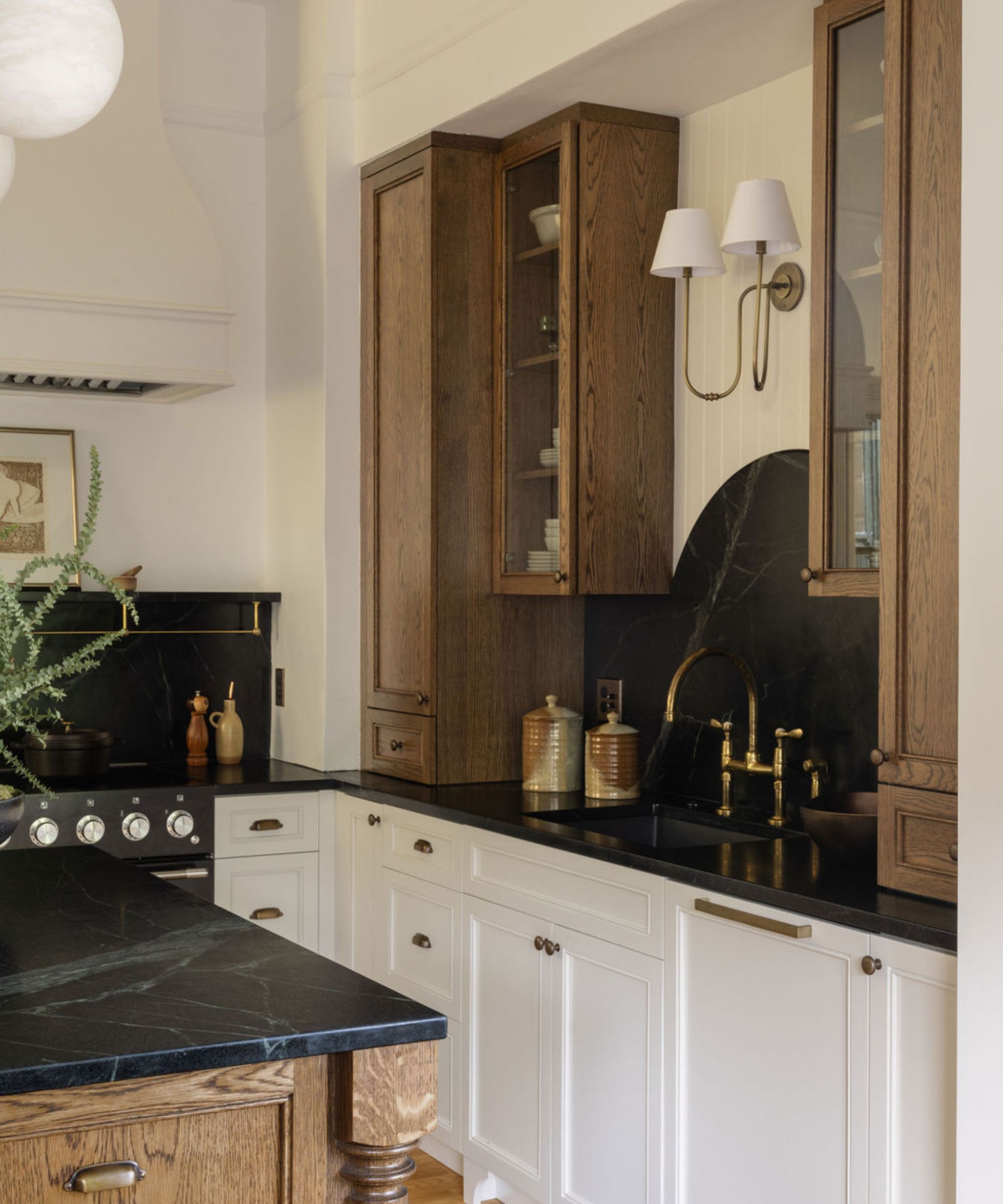
Vintage kitchen lighting is perfect for adding just a touch of charm in a way that doesn't impact the rest of the space. It's a nice option for smaller kitchens too where there might not be as much space for decor or furniture.
'To infuse your kitchen with antique or vintage charm, illuminate your space with vintage or vintage-inspired lighting such as sconces. Incorporate wooden cabinets with antique brass finishes and make sure the design has open shelving that can showcase antique cookware and vintage kitchenware. By Mixing and matching antique pieces with modern conveniences, you will successfully strike a balanced design that tells a story of the past while meeting contemporary needs of the present,' suggests Rachel Seldin of Seldin Design Studios.
6. Curate vignettes with vintage decor
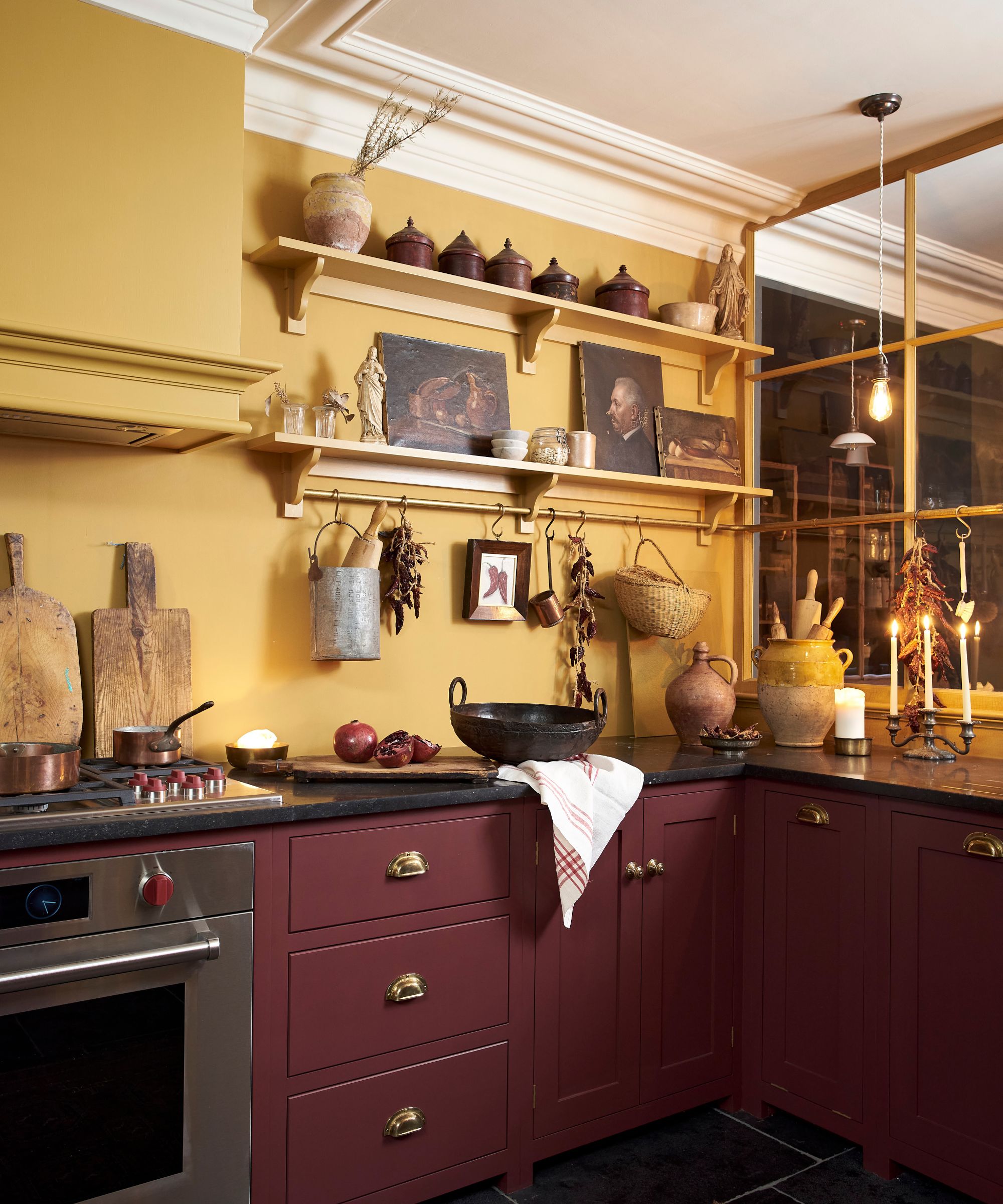
Kitchen shelving is the ideal real estate for curating little vignettes of vintage decor. You can mix them in with more practical kitchen items too like crockery or cookbooks. Vintage art is ideal, and you can get some really affordable pieces. Our advice is if you are just after pieces to add some character to your kitchen don't focus too much on the origins of the piece, if you love it, get it.
'Shelves with a higgledy-piggledy array of French porcelain bowls, books, and vintage glassware is the best way to create a feeling of a home that is more than just stylish, but a sign of a happy well-lived life.' explains Helen.
She also adds that houseplants make for lovely displays too and vintage pots can bring even more character into a kitchen. 'But Just popping a couple of plants on your windowsill isn’t enough they need to become part of the room, I find that planting them up in old terracotta pots and vintage garden urns makes them feel more special and cohesive.'
Where are the best places to hop for vintage pieces?
Some of the best places to shop vintage furniture and decor can be found online. Although nothing beats the thrill of finding an unexpected treasure at a thrift store, online marketplaces like 1stDibs, Chairish, Etsy, LiveAuctioneers, and Invaluable all offer fabulous pieces. You can often speak with the seller to ask any questions you might have.
Bringing vintage and antique pieces into a kitchen is a fail-safe way to ensure you create a timeless space that can adapt with ever-changing interior design trends. The best way to do it will always come down to your personal style and what space you have available. But you can always start small with a collection of decor before investing in larger pieces, and this the best way to help find the right balance between old and new too.







